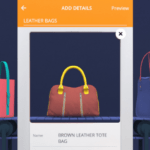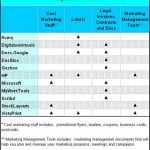When you’re reading an article online, you’re probably not stopping to consider what font the words are set in. But it’s making a big difference in how you absorb the news.
If you’re on a train and catch a glimpse of a newspaper over someone’s shoulder, chances are you can recognize which publication it is without being able to see the masthead. “The average person can tell you very quickly if an article came from the New York Times or the Dayton Daily News,” says Mario Garcia, senior adviser on news design and an adjunct professor at Columbia Journalism School.
That’s because establishing familiarity through font is part of a publication’s branding. You might not know a newspaper’s typefaces by name, but no matter what words are written, you could tell which publication they belong to. “The role of typography and design, in all of this, is to really remind you that you are in the place you trust,” says Garcia, who also runs a design studio whose clients have included the Wall Street Journal and the Washington Post. This is why many national publications don’t use standard typefaces such as Times New Roman or Georgia, instead working with a team of designers to create their own.
Typography not only creates familiarity with readers, but it’s also a large part of how publications establish authenticity and trust with their audience. On the surface level, a badly designed or ill-considered site influences how seriously readers view the content. “If you’re interviewing people to work in a law firm and they show up in jeans, they’re telling you they don’t take this job seriously. Type can do the same thing,” renowned type designer Tobias Frere-Jones told Quartz. “It can support the content that’s being delivered, fight against it, or undermine it.”
According to a recent report PEW Research Center, more than 60% of Americans turn to social media for news, and as social media has increased the amount of information we are presented with online, it has also reduced the time we have to process it. A lot of the information coming through these news feeds isn’t credible or factually correct, but we usually only have a split second to decide whether a link looks credible enough to click on it. Because of this, type allows us to quickly make subconscious judgement calls on an article’s validity.
These visual design elements become important filters for readers to gauge authenticity online. “I think subconsciously there are design filters our mind goes through,” says Samuel Berlow, CEO of Type Network. “We scan the URL, and then we look at the color scheme and the logo, and then…we absorb the typography.” In this way, before we even start reading an article on an unfamiliar site, there are considerations that we process. These visual design elements become important filters for readers to gauge authenticity online. “If there’s enough validity, you’ll scroll down and look at the text,” Berlow says.
The goal of fake-news outlets is to get through those validity filters. In order to do this, they must take on the challenge of mimicking the design and typographic elements of a credible news outlet. But designing typography is a lot more complex than it appears to the average reader. “It’s a difficult process because it takes a lot of design, and coordinating the logos with the headlines, the text, the column widths, the visuals, the illustrations and the pictures,” Berlow says. “All of those things combined create legitimacy.”
On the other hand, an outlet dedicated to accurate journalism will likely pay attention how that content is packaged. “The organizations that spend more time, more effort, and more resources investing in their journalism are probably going to spend a commensurate effort designing that work, organizing it, and making it accessible, rather than throwing a bunch of stuff on a page, and calling it done,” Frere-Jones says.
This makes it easier to spot a less reputable website masquerading as a legitimate one, even if non-designers can’t quite put their fingers on why. “I think fortunately for us it tends to be that the less reputable websites use typefaces that are perhaps easier to spot as being kind of cheap, or cheap defaults, or as lazy defaults,” UK-based designer Elliot Jay Stocks told Quartz.
Facebook and other social media giants, who’ve been heavily criticized for playing an active role in the spread of fake news after the 2016 US presidential election, have also changed the way readers interact with the publications they do trust. Stocks says that platforms like Facebook’s Instant Articles and Google’s AMP, which both optimize versions of websites into mobile application for faster loading, have an impact on a publications’ typographic considerations. “In those instances, often you only have the very core of a brand to do the work: a logo, a couple of colors, and of course the typeface,” he said. “So choosing type wisely for online use is perhaps more important than it ever has been from a brand’s perspective.”
In an age of false information on the web, where readers are exposed to and must evaluate endless sources online, design is an even more powerful tool.
[Source”indianexpress”]











